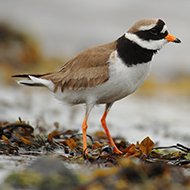Abundance of wild animals at Chernobyl, study finds
The findings show that wolves in Chernobyl are seven times as common than in nearby nature reserves of a similar size.
Area is entirely devoid of humans
The exclusion zone surrounding the Chernobyl nuclear plant supports more wildlife now than it did before the 1986 nuclear accident, according to a new study.
Findings published in the journal Current Biology show that the number of large animals in Chernobyl, such as deer, wild boar and elk, are similar to populations in similar (uncontaminated) nature reserves.
The findings also show that wolves in Chernobyl are seven times as common than in nearby nature reserves of a similar size.
Speaking to BBC News, lead author Professor Jim Smith of the University of Portsmouth stressed that "this does not mean that radiation is good for wildlife".
"It's just that the effects of human habitation, including hunting, farming, and forestry, are a lot worse," he said.
Over 100,000 people had to leave the area surrounding the Chernobyl nuclear plant after an explosion in 1986 left tons of radioactive material poring into the atmosphere.
The area is now entirely devoid of humans and the number of deaths since the accident - in particular those from radiation exposure and cancers - is highly disputed.
In the study, researchers examined data from helicopter surveys that counted large mammals such as deer, wolves and elk. They also carried out tracking studies in the winter - using footprints in the snow to calculate the numbers of different mammal species.
They found that the abundance of mammals was not negatively correlated with radioactivity levels; mammal numbers are not lower than they are at other nature reserves in the area; and animals populations began to stabilise and recover within a year of the accident.
Professor Smith told the BBC that the study shows what happenes in terms of wildlife conservation "when you take humans out of the picture."







 The veterinary mental health charity Vetlife is inviting the veterinary community to join it for a sponsored cold-water dip.
The veterinary mental health charity Vetlife is inviting the veterinary community to join it for a sponsored cold-water dip.
